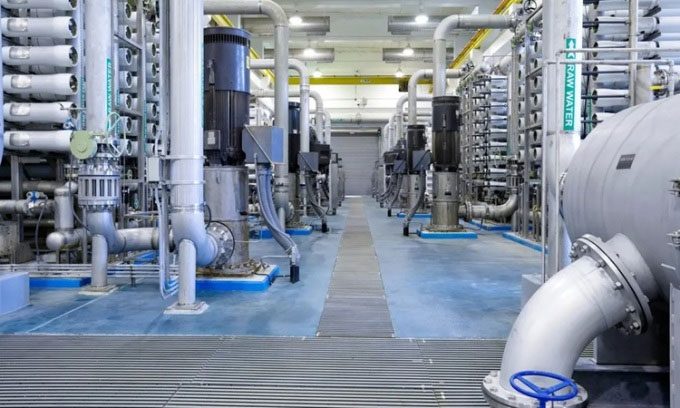The floating desalination plant with a capacity of 40,000m3 of water per day will help Barcelona address its water usage needs amidst a prolonged drought.
Residents in Barcelona are facing the worst drought in history. Authorities believe that the floating desalination plant is a more economical and environmentally sustainable solution compared to water transport, as reported by Interesting Engineering on April 22.

The floating desalination plant will be located at the port of Barcelona. (Illustrative photo: iStock).
Previously, Barcelona relied on the largest desalination plant in Europe, Llobregat, to meet its water needs, but that supply is insufficient under current circumstances. The government will install a floating desalination plant at the port of Barcelona. The facility will become operational if the water collection system in the Catalonia region enters emergency drought phase 2, expected before October. Phase 2 of the emergency status occurs when reservoir levels drop below 10.95%. In such cases, water consumption will be restricted to 180 liters per person per day. Authorities plan to deploy a total of 13 desalination facilities, including 12 mobile units in the Costa Brava region and the floating plant installed in Barcelona.
The floating desalination plant will be equipped with all necessary technologies, producing about 6% of the water consumption of the Barcelona metropolitan area, approximately 14 million m3 of water per year. The water produced will be stored in reservoirs before being introduced into the distribution network. For the Costa Brava region, the 12 mobile desalination plants, costing nearly 10.7 million USD, can meet about 35% of the water supply needs there. According to David Mascort, Minister of Climate Action, Food and Rural Agenda, the purchase of the mobile desalination plants is calculated based on a 5-year usage period. This is the necessary time for other essential infrastructure projects related to water resources to be operational.
The floating desalination plant has no mooring costs and does not affect maritime traffic. The facility produces approximately 40,000m3 of water per day, nearly 50% more than the average 25,000 m3 of water per day if transported by ship. The cost of producing water via the floating desalination plant is also much cheaper, at only 6.4 USD/m3, compared to 10.7 USD/m3 for ship transport.
Earlier this year, after more than 1,000 days of drought, provincial authorities declared a state of emergency. Water usage restrictions affect 6 million people in Barcelona and 200 towns, which is over half the province’s population. Currently, residents of Barcelona use 160 liters of water per person per day. Last year, the Spanish government approved a 2.35 billion USD plan to help farmers and consumers cope with the prolonged drought.
A recent report from the Copernicus program confirms that Europe experienced a near-record hot year in 2023, with severe wildfires. European temperatures were above average for 11 months of the year. Heat-related deaths are estimated to have increased by 94% in European areas monitored by the program.


















































